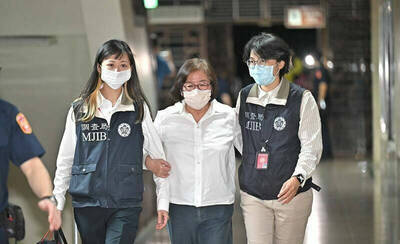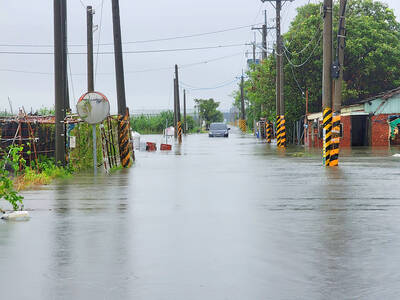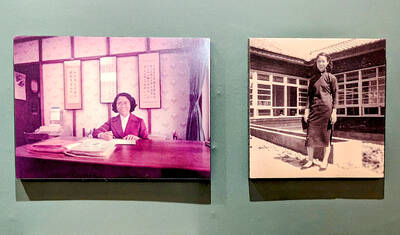Lunar New Year has passed and you're flush with cash from red envelopes and a company bonus. Now's the perfect time to turn your living room -- or bedroom -- into a film studio. And if you own a PC, the best way to do that is to buy a digital video camera.
DV cameras hit the market nearly a decade ago and now account for nearly half of all camcorder sales, according the Consumer Electronics Association. That's because the technology that supports DV cameras has come of age. Firewire and faster computer processing speeds have made working with digital footage much easier than when the cameras were first introduced, and DVD burners and broadband Internet connection make distributing your homemade films less cumbersome. Best of all, in the 10 years since they were introduced, DV cameras have become almost affordable.

Digital video format is a sequence of frames compressed to a data rate of 25MB per second, using a technology called Motion JPEG. Rather than storing a video frame on tape in analog format, as a Hi8 or VHS camera would, DV cameras convert the image to a bunch of ones and zeros, then compress it into the JPEG format. This format greatly reduces the generation loss associated with storing an image on tape, which means that digital video maintains better quality when it's copied. In addition, DV has more than twice the resolution of analog cameras -- 500 lines of resolution compared to VHS's 240. You'll be appalled at how real you look.
Knowing any of that is of little use when you're shopping for a camera, though, unless you understand the secret language of camcorder acronyms. This article will try to demystify this arcane language by looking at a few of the most popular models.
Besides price, perhaps the most important thing to look for initially is the number of charge-coupled devices (CCDs) the camera has since that information relates directly to image quality. CCDs convert the brightness and color information that comes through the camera lens into a digital format, much the way the retinas of your eyes convert the world into something your brain can see. Generally speaking, the larger the CCD and the more of them the camera has, the better the image quality. Consumer-quality DV cameras usually employ one to three CCDs that range in size from 1/6 inch to 1/3 inch and resolutions usually fall between 300,000 pixels and 1 megapixel per CCD. When you compare cameras, look at effective resolutions instead of gross sensor resolutions.
The cameras
Samsung's SC-D80 (US$400) has a single, 1/3-inch CCD and will make adequate movies of baby's first birthday. Hobbyist, semi-professionals or people with money to burn will likely want something more akin to Canon's XL1S (US$3,500), or Sony's DCR-VX2000 (US$2,200), both of which have three, 1/3-inch CCDs and will make you look like George Lucas with your first filmed effort. (All the recent Star Wars installations were shot on DV) For a balance of quality and affordability, consider Sony's DCR-TRV950 (US$1,800) or Canon's GL2 (US$1,900), both of which boast three, 1/4-inch CCDs but lack some professional features, such as compatibility with high-quality audio equipment and interchangeable lenses.
Next, differentiate between optical zoom and digital zoom, with the former being preferable. As you might guess, optical zoom uses the camera's lenses to magnify an image whereas digital zoom magnifies through a process called interpolation, which adds pixels to what the CCD has collected. Digital zoom essentially makes an educated guess about what information additional pixels would have contained if more had been collected. If your hobby is travelling the world's museums making videos of pointillist paintings, don't buy a digital zoom camera. As a rule of thumb, less expensive cameras have digital zoom and more expensive ones have optical.
You'll also want to check the camera's lux rating, which determines its ability to shoot in low-light. In this case, bigger is not better -- the higher the lux rating, the lower the camera's ability to shoot in the dark. Sony's DCR-TRV950 with the three CCDs has surprisingly poor light sensitivity, with a lux rating of seven. The more expensive DCR-VX2000 is better, with a lux rating of four.
Light sensitivity can also be determined in part by looking at the lens' aperture. A maximum aperture of f1.4 or f1.6 is best for low-light conditions.
Given what you intend to do with your movies, you'll want to concern yourself with how the camera stores the video it retrieves. The most common types of devices for consumer camcorders are MiniDV and Digital8. MiniDV stores on a cassette tape that's about the half the size of a deck of cards. Digital8 stores onto DV-formatted Hi8 tapes and has the added benefit of being able to read analog tapes.
Downloading
Most every camera is shipped with cables that will allow you to hook it up to a television, if that's the only plan you have for watching your movies. If, however, you plan to download your film onto your computer for editing purposes, make sure you get a camera with Firewire.
Macintosh users are long familiar with the blazing speed at which you can transfer files with Firewire and now most video-oriented PCs ship with it as well. Many of Sony's cameras, including its new DCR-TRV50 (US$1,000) use Bluetooth technology to get the video onto your computer. Whichever camera you purchase, make sure it's compatible with your computer, or you'll be climbing through a lot of pop-up windows instead of getting your video onto your machine.
If you plan to edit your movies on your computer, it would be wise to avoid buying a camera loaded with special-effects features. Editing software can do all these functions more easily than tinkering with dozens of tiny buttons hidden behind a camera panel -- and it's a good way to keep the price of your camera down.
One last word about camera prices: They vary wildly from place to place -- both within Taiwan and between countries -- and buying over the Internet is no guarantee of getting a good price.

Following the shock complete failure of all the recall votes against Chinese Nationalist Party (KMT) lawmakers on July 26, pan-blue supporters and the Chinese Communist Party (CCP) were giddy with victory. A notable exception was KMT Chairman Eric Chu (朱立倫), who knew better. At a press conference on July 29, he bowed deeply in gratitude to the voters and said the recalls were “not about which party won or lost, but were a great victory for the Taiwanese voters.” The entire recall process was a disaster for both the KMT and the Democratic Progressive Party (DPP). The only bright spot for

Water management is one of the most powerful forces shaping modern Taiwan’s landscapes and politics. Many of Taiwan’s township and county boundaries are defined by watersheds. The current course of the mighty Jhuoshuei River (濁水溪) was largely established by Japanese embankment building during the 1918-1923 period. Taoyuan is dotted with ponds constructed by settlers from China during the Qing period. Countless local civic actions have been driven by opposition to water projects. Last week something like 2,600mm of rain fell on southern Taiwan in seven days, peaking at over 2,800mm in Duona (多納) in Kaohsiung’s Maolin District (茂林), according to

Aug. 11 to Aug. 17 Those who never heard of architect Hsiu Tse-lan (修澤蘭) must have seen her work — on the reverse of the NT$100 bill is the Yangmingshan Zhongshan Hall (陽明山中山樓). Then-president Chiang Kai-shek (蔣介石) reportedly hand-picked her for the job and gave her just 13 months to complete it in time for the centennial of Republic of China founder Sun Yat-sen’s birth on Nov. 12, 1966. Another landmark project is Garden City (花園新城) in New Taipei City’s Sindian District (新店) — Taiwan’s first mountainside planned community, which Hsiu initiated in 1968. She was involved in every stage, from selecting

As last month dawned, the Democratic Progressive Party (DPP) was in a good position. The recall campaigns had strong momentum, polling showed many Chinese Nationalist Party (KMT) lawmakers at risk of recall and even the KMT was bracing for losing seats while facing a tsunami of voter fraud investigations. Polling pointed to some of the recalls being a lock for victory. Though in most districts the majority was against recalling their lawmaker, among voters “definitely” planning to vote, there were double-digit margins in favor of recall in at least five districts, with three districts near or above 20 percent in